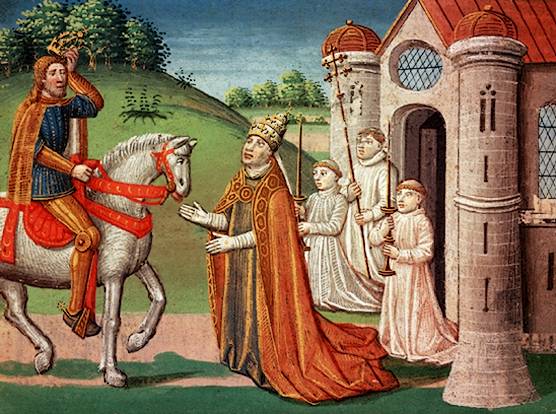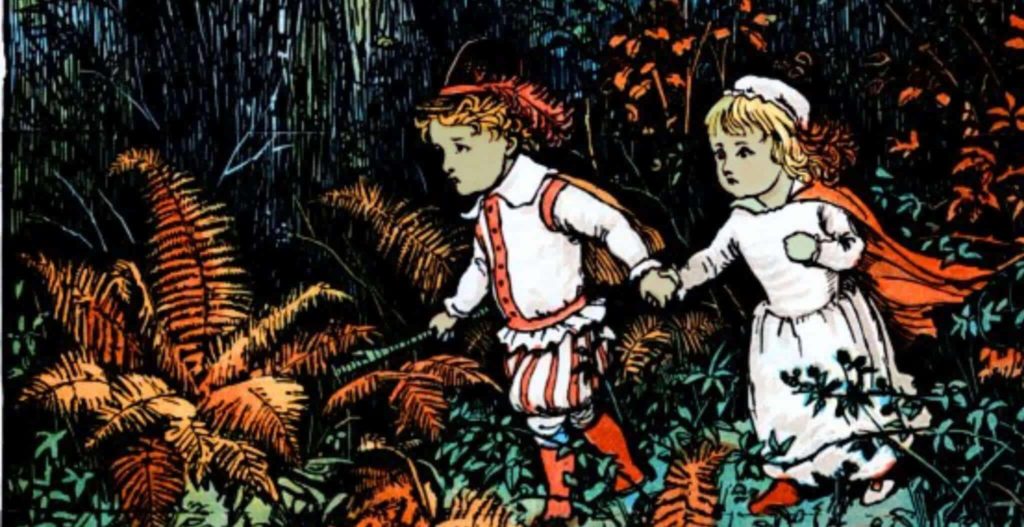Last updated on July 22nd, 2022 at 04:46 pm
Medieval European history is full of notable characters, from Leif Erikson, the Norse explorer who discovered North America approximately 500 years before Christopher Columbus, to William the Conqueror, the Duke of Normandy who conquered most of Britain in the eleventh century, to Frederick Barbarossa, the German ruler who established his authority over much of Central Europe and very nearly conquered northern and central Italy.
Yet of all Europe’s medieval rulers, only one has earned the moniker of Pater Europae or Europae Pater, ‘the father of Europe’ or ‘Europe’s father.’
This is Charlemagne or Charles the Great, the ruler of the Kingdom of the Franks in what is now France from 768 AD. So how did he become known as the continent’s father?

The Establishment of the Carolingian Dynasty
Charles was born on the 2nd of April in the year 747. He was named after his grandfather, Charles Martel, a very significant figure who had been Mayor of the Palace to the Merovingian rulers of the Kingdom of the Franks.
The Mayor was the most powerful political figure within the Merovingian kingdom, and Charles had led the famous Frankish defense of France against the Muslim invasion of the country by defeating them at the Battle of Tours in 732.
This was the first significant defeat of Muslim armies in Europe and prevented the Arab Caliphate from extending its control across much of the continent.
In its aftermath, Charles Martel effectively used his power to displace the ineffective Merovingian royal family and made himself King of the Franks in all but name.
His son Pepin succeeded him on Martel’s passing in 741 and ten years later formalized his position by becoming the first Carolingian King of the Franks. Thus, when Pepin died in 768, he was succeeded by his son, the future Charlemagne.
The Carolingian Empire
Although only twenty-one years of age at the time of his accession, Charles quickly expanded his territorial possessions.
When he became its ruler, the Kingdom of the Franks was largely centered on modern-day France, with some additional territories in the Rhineland region of western Germany and much of Belgium.
In the 770s, he began a blistering series of conquests, first bringing much of northern and central Italy under his rule after campaigning extensively against the Lombards, a Germanic people who had become the rulers of the plains of the north of the country to which they gave their name in the late sixth century.
He followed this by campaigning in southwestern France, where the Arabs still held the country of Toulouse and other regions.
By the 780s, he had pushed them back over the Pyrenees into the Iberian Peninsula and even conquered parts of Catalonia, seizing Barcelona in 797.
Thus, Charlemagne was central to the first steps in the Christian Reconquista of Spain from the Muslims. Further victories followed, with Corsica, Sardinia, and the Balearic Islands under Frankish control by the end of the 790s.
Yet the greatest territorial expansion was eastwards, with Charlemagne expanding the Carolingian Empire throughout Central Europe, including most of modern-day Germany, Austria, and parts of Croatia and Hungary.
This was the greatest empire that Western and Central Europe had seen since the fall of the Western Roman Empire three centuries earlier.
The Carolingian Renaissance
It was not just that Charlemagne conquered a vast amount of lands. He also oversaw the spread of a new revitalized ‘European’ culture throughout his dominions from France to Hungary and from the North Sea south as far as the city of Rome.
His government’s scribes began copying ancient texts and preserving them for later cultures. New cathedrals, palaces, and civic buildings were constructed in the Romanesque architectural style in France, Italy, Germany, and northern Spain.
He created a powerful bureaucracy to govern Western and Central Europe more effectively.
The first stirrings of decidedly European literature emerged, one which no longer looked back to Rome but had a personality of its own.
The Roman Catholic Church’s role in European life was strengthened.
Effectively this Carolingian Renaissance during Charlemagne’s long reign gave birth to a new culture, one which was specific to medieval Europe rather than being comprised of vestiges of the Roman past. This is one of the major reasons why Charlemagne is deemed to be the ‘Father of Europe’.
Holy Roman Emperor
And yet there is an even further reason why Charlemagne is referred to as Pater Europae.
This relates to political developments during the latter part of his reign. In Rome, on Christmas Day in the year, 800, Pope Leo III crowned Charles as the new Emperor of the Romans.

This title at once harked back to the power of the Roman Empire but also sought to recognize the emergence of this new power in Western and Central Europe.
This was a new political entity, one which combined the territorial claims of the Western Roman Emperors while acknowledging the importance of the Roman Catholic Church within the new dispensation.
It was a partnership between the first great monarch of medieval Europe and the bishop of Rome, who held primacy over the western church. This political alliance of church and state would have implications in Europe for centuries.
Charlemagne’s Legacy
Charlemagne died in 814, by which time he had built the greatest empire in the region in over 400 years.
Yet his legacy and role in shaping Europe continued long after his death. Although his empire passed intact to his son and successor, Louis the Pious, and from Louis to his own son Lothar in 840, civil war followed Lothar’s succession.
In this, his brothers Charles and Louis sought to gain a portion of the Carolingian Empire. They were successful in this, and the Carolingian Empire broke into several entities.
These divisions led over time to the creation of the individual countries of France and Germany. Thus, the dynastic situation which stemmed from Charlemagne’s reign was the root of the creation of Europe’s most powerful nation-states.
Additionally, the title of Emperor of the Romans eventually morphed into that of the Holy Roman Emperor. This title, which the Pope first granted to Charles in 800, shaped Central Europe’s politics for the next millennium.
The holders of the office of the Holy Roman Emperor exercised great power throughout Germany and Austria for centuries to come, and it was only in 1806, over a thousand years after Charlemagne was first crowned in this way, that it was formally dispensed with.
As such, Charlemagne’s legacy was multi-faceted. In shaping the politics, culture, and geographical boundaries of Europe’s nation-states, he rightly has been deemed the ‘Father of Europe.’

